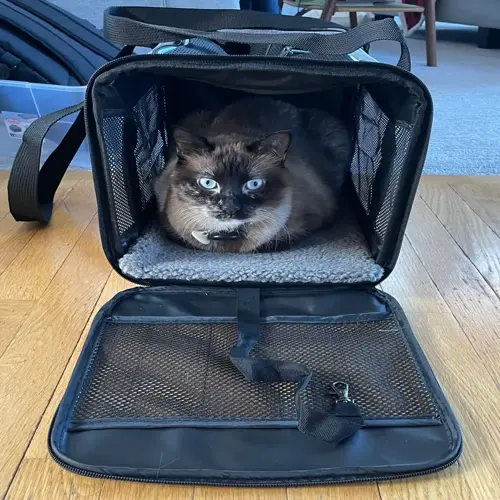Why does my cat ignore the clicker?

Written by
Elin Eriksson
Reviewed by
Prof. Edward Clarke, Ph.D.If your cat ignores the clicker, it doesn't mean they're being stubborn; it simply means they're not responding to the clicker. The disengagement is often due to flaws in the method. Improperly motivating or frustrating the cat is usually the source of the training issue. I have solved a plethora of problems just by making small changes, turning all the unresponsive cats into eager ones. The first step is to rule out any potential medical issues with a veterinary checkup.
Motivation Boosters
- Introduce novel proteins like rabbit or venison treats
- Increase treat value using lickable pastes during sessions
- Rotate reward types monthly to maintain novelty
Session Adjustments
- Shorten sessions to 90 seconds maximum initially
- Train during peak alertness periods before meals
- End before first signs of distraction appear
Sensory Accommodations
- Muffle clicks inside socks for sound-sensitive cats
- Switch to vibration collars set to lowest intensity
- Use visual markers like flashlights for hearing-impaired cats
Zero Point Five-Second Rule for reducing confusion. Click at the exact moment the correct behavior occurs, not after. Videotape your sessions and observe your timing. Often in video reviews, I find the use of a delayed click, which causes the bond to fail. Practice without your cat first for muscle memory.
For sound-sensitive felines, you can soften the harsh click sound by wrapping the clickers in fabric or using devices that don't sound like clicks, such as softer versions like box clickers, when needed. In extreme cases, hand signals or light cues may need to be substituted for the clickers altogether. I've retrained cats by earning their click treats with flashes from a flashlight when the harshness of the sound made training impossible.
Reclaim engagement via micro-sessions. Start with five repetitions of simple, known behaviors. You should reward generously to help support the reinstatement of any positive behaviors. Only raise the ante once a consistent response returns. If you have patience during this reset phase, it can help prevent disengagement from becoming a permanent state.
Read the full article: Cat Clicker Training: The Complete Guide

